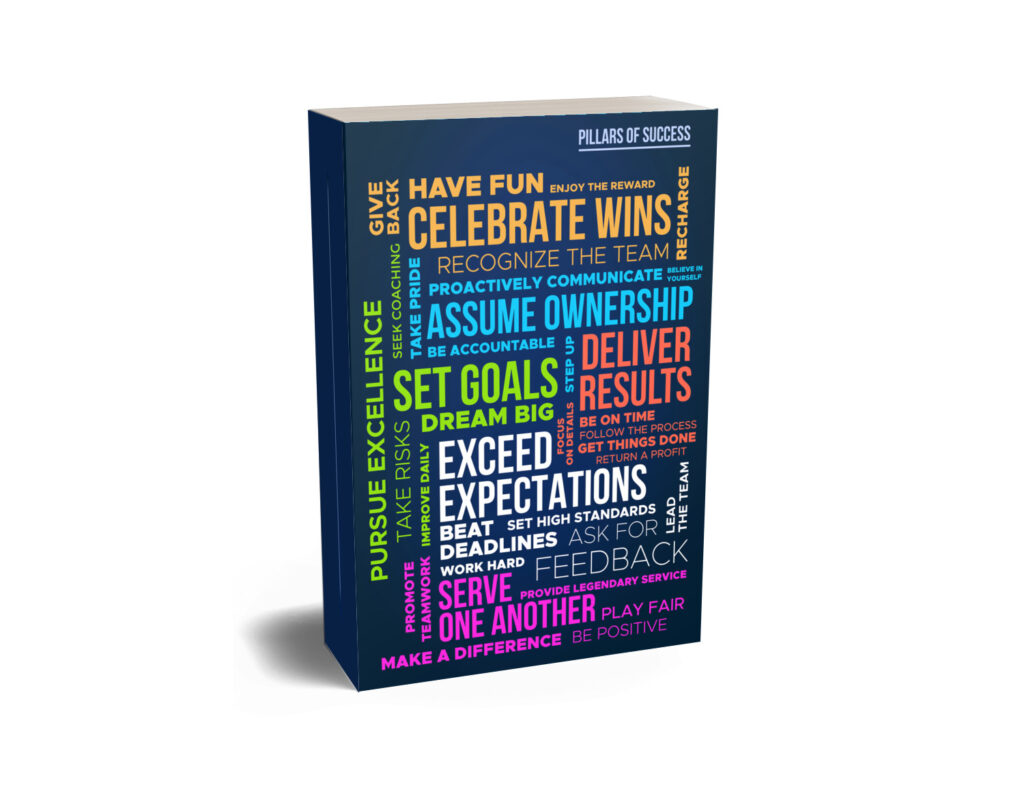In our collective journey toward personal mastery and professional excellence, the art of seeking feedback stands as a critical pillar. It’s a practice rooted in the understanding that growth is not a solitary endeavor but a collaborative process enriched by the perspectives of others. Whether it’s constructive critique from a mentor, insightful observations of a peer, or the candid reflections of a team, feedback serves as a compass, guiding individuals towards continuous improvement and success.
Feedback, in its essence, is a mirror reflecting our strengths and areas ripe for development, offering a clear vision of the path forward. It’s a two-way dialogue between the giver and receiver, a shared journey towards excellence that challenges us to look beyond our perceptions and embrace growth. In a world marked by rapid change and fierce competition, the ability to solicit, process, and act on feedback becomes not just advantageous but essential. It propels innovation, sharpens skills, and fosters adaptability, positioning individuals and organizations to thrive in the face of challenges.
Yet, the practice of seeking feedback is more than a mechanism for improvement; it’s a testament to the courage and humility of those willing to ask, “How can I do better?” It requires an openness to vulnerability, a readiness to hear what might be uncomfortable, and, most importantly, the resilience to use that information constructively.
As we delve into the strategies for seeking and utilizing feedback effectively, we uncover the practical steps that anyone can take to make feedback a cornerstone of their growth strategy. From cultivating a receptive mindset to engaging in open dialogue and acting on the insights gained, these steps and examples outline a roadmap for turning feedback into a catalyst for transformation and achievement.
The Essence of Seeking Feedback
Seeking feedback is fundamentally about embracing external perspectives to refine and elevate one’s approach to both personal and professional challenges. It acknowledges that true growth is not an isolated endeavor but rather a collaborative journey, enriched by the insights and experiences of peers, mentors, and even critics. These external viewpoints serve as beacons, illuminating paths to improvement that might otherwise remain obscured by our own biases or limited perspectives.
This practice goes beyond the passive act of simply listening to the opinions of others. It involves actively engaging in a proactive dialogue where constructive criticism is not just welcomed but is seen as a critical asset for development.
Why is Seeking Feedback Important?
- Accelerating Personal Growth: Feedback acts as a mirror, reflecting both strengths and areas for development. It provides a unique opportunity to accelerate personal growth by identifying blind spots and reinforcing successful behaviors.
- Enhancing Professional Development: In a professional context, feedback is crucial for career advancement. It helps individuals align their efforts with organizational goals, meet performance standards, and cultivate the skills necessary for leadership roles.
- Fostering Innovation and Creativity: Feedback can spark innovation by challenging existing ideas and encouraging creative problem-solving. It opens the door to diverse viewpoints, fostering an environment where innovation thrives.
Dimensions of Seeking Feedback
Constructive Critique
Abraham Lincoln’s presidency, set against the backdrop of the American Civil War, exemplified unparalleled leadership through the strategic use of feedback. Lincoln, facing a nation divided, understood the immense value of diverse perspectives, especially from those who held opposing views.
His cabinet, a collection of individuals from various political backgrounds, many of whom were once his rivals, served as a critical sounding board for his policies. This deliberate assembly was based on Lincoln’s belief that “I don’t like that man. I must get to know him better,” highlighting his conviction that understanding differing viewpoints was essential for informed decision-making.

Lincoln’s engagement with his cabinet was not merely for show; it was a genuine effort to solicit feedback and use it constructively. He often held lengthy discussions on key issues, where he encouraged open debate and dissent. This approach not only enriched his perspectives but also fostered a sense of collaboration and respect among his team, despite their differences.
His ability to navigate through criticism and conflicting opinions, and to then make decisive, informed choices, was a hallmark of his leadership. Lincoln’s adeptness at incorporating diverse feedback into his decision-making process was instrumental in shaping policies that would eventually lead to the preservation of the Union.

Lincoln’s legacy teaches us the power of constructive critique in leadership. His approach underscores the importance of seeking out and thoughtfully considering feedback, even (or especially) when it challenges our assumptions.
By doing so, leaders can make more nuanced and effective decisions, driving forward with a vision that is both bold and deeply informed by the realities and complexities of their context.
Fostering Innovation
Bill Gates, co-founder of Microsoft and a key figure in the personal computing revolution, has long championed the importance of feedback in fostering innovation and excellence. Gates’ philosophy, “We all need people who will give us feedback. That’s how we improve,” reflects a core principle that has guided both his professional endeavors and philanthropic efforts.
At Microsoft, Gates established a culture where feedback was not just encouraged but was seen as essential for growth and development. This culture of continuous improvement helped Microsoft stay at the forefront of technological advancements and maintain its competitive edge.

Gates’ approach to feedback extended beyond internal processes. He actively sought input from users, understanding that their experiences and insights were invaluable for refining products and services. This user-centric approach to feedback has been a defining feature of Microsoft’s product development strategy, leading to innovations that have shaped the tech industry.
Furthermore, Gates’ belief in feedback as a tool for improvement is evident in his philanthropic work. The Bill & Melinda Gates Foundation employs rigorous feedback mechanisms to assess the impact of its initiatives, ensuring that they effectively address the challenges they aim to combat.

Gates’ perspective on feedback underscores its critical role in continuous improvement and innovation. By valuing and acting on feedback, leaders and organizations can adapt and evolve in response to changing needs and challenges. Gates’ success illustrates how a commitment to seeking and utilizing feedback can drive significant advancements and achieve lasting impact.
Open Communication
Indra Nooyi’s leadership at PepsiCo was characterized by her commitment to open communication and the strategic use of feedback to drive the company forward. Nooyi believed that creating a culture where feedback was freely exchanged could unlock potential and spur innovation.
Her philosophy, “If you don’t give people feedback, they don’t grow,” was central to her efforts to transform PepsiCo into a more agile and responsive organization. Under her leadership, PepsiCo not only saw significant growth but also embarked on a path toward healthier products and sustainability, reflecting Nooyi’s vision for the company’s future.

Nooyi’s approach to feedback was multifaceted. She implemented structures and forums that encouraged employees at all levels to share their ideas and feedback. This open dialogue was crucial for identifying opportunities for improvement and innovation.
She was known for her willingness to engage in honest conversations, providing direct feedback that was both challenging and supportive. Her leadership style fostered a sense of trust and respect, making feedback a powerful tool for personal and organizational development.
Her tenure at PepsiCo demonstrates the transformative power of open communication and feedback. By fostering an environment where feedback is valued and acted upon, leaders can drive meaningful change and position their organizations for long-term success. Nooyi’s legacy is a testament to the impact of embracing feedback as a cornerstone of leadership and organizational culture.
Practical Steps to Improve Daily
- Cultivate a Receptive Mindset: Embrace feedback with an open heart and mind, understanding its role as a catalyst for growth. Recognize that constructive criticism is not a personal attack but an opportunity for personal and professional development. Cultivating a mindset that welcomes feedback, even when it’s challenging to hear, is the first step toward meaningful improvement. Remind yourself, “Feedback is the breakfast of champions,” as Ken Blanchard famously said, highlighting its importance in achieving excellence.
- Ask Specific Questions: To gain valuable insights, frame your requests for feedback with specific, targeted questions. Instead of asking broad questions like “How am I doing?”, inquire about particular aspects of your performance or project, such as “What could I have done better in that presentation?” or “How can I improve the effectiveness of my team meetings?” This specificity not only makes it easier for others to provide useful feedback but also shows that you’re committed to making concrete improvements.
- Create Safe Spaces for Dialogue: Establish an environment where feedback is not only encouraged but also respected. This involves building trust and ensuring that those providing feedback feel their insights are valued and will be used constructively. Encourage open and honest communication by expressing gratitude for feedback received and by acting on it. Demonstrating that feedback leads to positive changes can reinforce a culture of open dialogue.
- Act on the Feedback: Show that you value the feedback by taking concrete actions to address the insights and suggestions received. Develop a plan for implementing changes based on the feedback, whether it involves adjusting your behavior, enhancing your skills, or modifying a project’s direction. Follow up with those who provided the feedback to share how you’ve acted on their suggestions, reinforcing the value of their input and your commitment to continuous improvement.
- Provide Regular Feedback to Others: Foster a reciprocal feedback culture by regularly providing constructive feedback to colleagues, team members, and even superiors. Offering thoughtful, specific, and actionable feedback can encourage a mutual exchange of ideas and promote a shared commitment to growth and development. Remember to deliver feedback in a manner that’s respectful and considerate, aiming to support and uplift rather than criticize.
- Reflect and Adjust: Regular reflection on the feedback received and the outcomes of the actions taken is crucial. Assess whether the changes you’ve implemented have led to the desired improvements and consider any additional adjustments that may be necessary. This ongoing cycle of seeking feedback, acting on it, and reflecting on the results is a powerful engine for continuous growth and development.
- Seek Diverse Perspectives: Broaden your understanding and approach to challenges by seeking feedback from a wide range of sources. Diverse perspectives can offer unique insights and highlight aspects of your performance or project that you may not have considered. Engaging with individuals from different backgrounds, departments, or even industries can provide a richer, more comprehensive view of your strengths and areas for improvement.
The Wrap
Seeking feedback is a powerful tool for anyone looking to excel in their personal and professional life. It provides critical insights that can lead to significant growth, innovation, and enhanced performance. By actively seeking feedback, individuals open themselves to learning opportunities that might otherwise remain undiscovered.
The practice of seeking feedback, when approached with humility and a commitment to act on the insights gained, can transform challenges into stepping stones for success. Whether through the historical examples of Abraham Lincoln, Bill Gates, or Indra Nooyi, it’s clear that feedback is an invaluable resource for improvement.
Embracing this practice can set the stage for a journey of continuous growth, marked by learning, adaptation, and the relentless pursuit of excellence.





